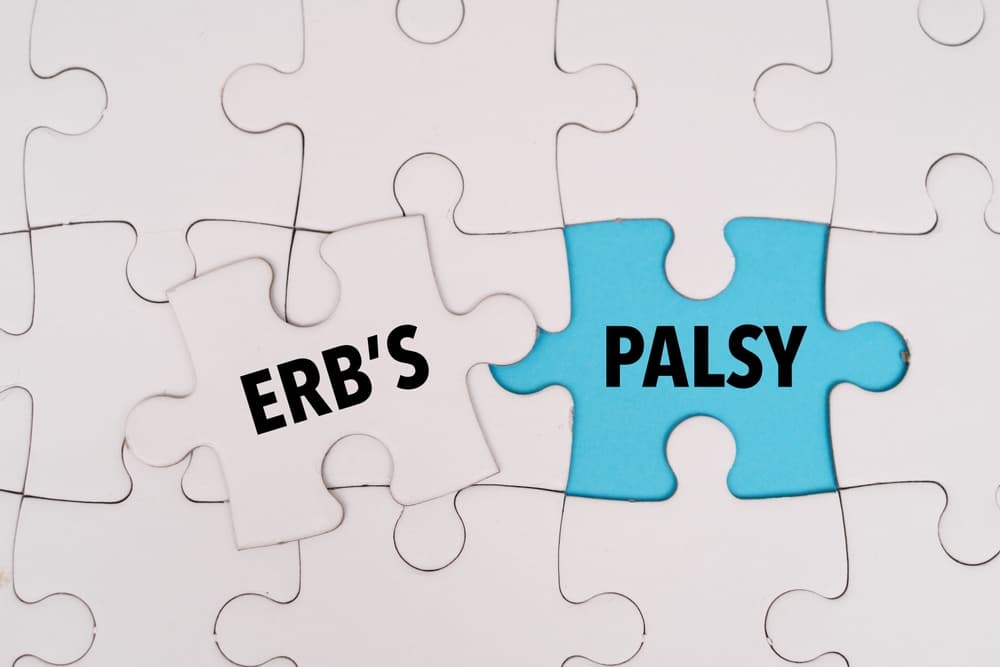Erb’s palsy is a birth injury affecting the brachial plexus nerves (C5–T1), which control muscles in the shoulder, arm, and hand. It occurs in 0.9 to 2.6 per 1,000 live births, causing significant arm weakness in 0.4 to 5 per 10,000 births. While many cases resolve, permanent impairment occurs in 3%–25% of cases.
Schedule a Free Case Evaluation

The injury typically presents as a “waiter’s tip hand,” where the baby’s arm hangs limp with the shoulder adducted, internally rotated, the forearm pronated, and the wrist flexed outward. There may be limited or no movement at the shoulder, elbow, forearm, or wrist, hand dysfunction, and sometimes scapular winging. In permanent cases, the affected arm may be shorter as the child grows.
Treatment depends on severity and may include neurolysis or tendon transfer surgery, botulinum toxin injections, bracing, splinting, and occupational or physical therapy.
Erb’s palsy usually results from excessive lateral traction during vaginal delivery, especially when delivering the baby’s shoulders. Most injuries are temporary, but permanent cases are generally due to excessive force by the provider, absent other causes like infection, malignancy, or fetal abnormalities.
Shoulder dystocia-a condition where the baby’s shoulder becomes stuck during delivery-significantly increases the risk. If not promptly managed, it can also cause severe complications such as fetal asphyxia, hypoxic encephalopathy, or death. Shoulder dystocia is recognized when the baby’s head delivers but the shoulders do not, and forceful attempts to deliver the body can stretch and injure the nerves, increasing the risk of Erb’s palsy.
The medical malpractice lawyers at our firm have handled many cases of permanent Erb’s palsy, helping affected children and their families seek relief.